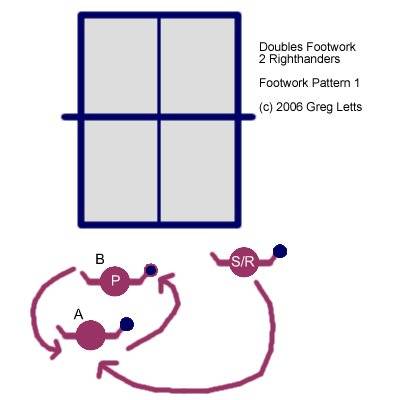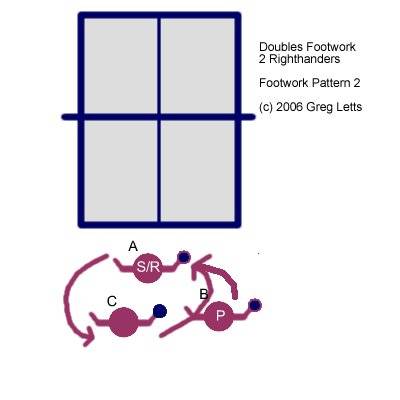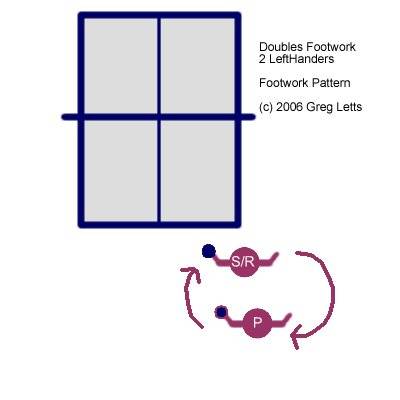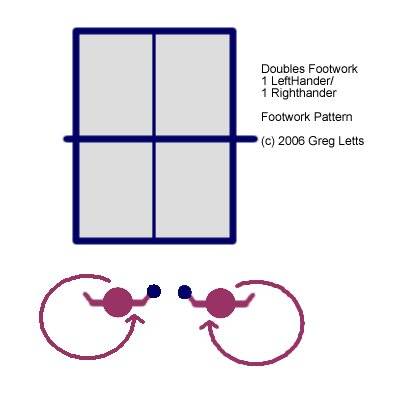Doubles Footwork Pattern 1 For Two Righthanders

© Greg Letts
The footwork pattern outlined below allows two righthanded players to cover most of the table with their forehands, while keeping out of each other’s way.
- The server or receiver (S/R) serves (or receives serve) and moves in a roughly circular motion to position A.
- The partner (P) hits the third ball (or fourth ball) and moves in a roughly circular motion to the left, towards position A.
- While the partner is moving towards position A, the server/receiver is moving from position A towards position B, so that he can hit the fifth ball (or sixth ball), and then he moves in a roughly circular motion to the left, towards position A.
- The players continue to rotate position as the point continues.
Doubles Footwork Pattern 2 For Two Righthanders

© Greg Letts
The footwork pattern outlined below allows two righthanded players to cover most of the table with their forehands, while keeping out of each other’s way.
- The server or receiver (S/R) serves (or receives serve) and moves in a roughly circular motion to the left towards position C.
- The partner (P) moves forward from position B to position A in order to hit the third ball (or fourth ball) and then moves in a roughly circular motion to the left, towards position C.
- While the partner is moving towards position C, the server/receiver is moving from position C towards position A, so that he can hit the fifth ball (or sixth ball), and then he moves in a roughly circular motion to the left, towards position C.
- The players continue to rotate position as the point continues.
Doubles Footwork Pattern For Two Lefthanders

© Greg Letts
The footwork pattern outlined below allows two lefthanded players to cover most of the table with their forehands, while keeping out of each other’s way.
- The server or receiver (S/R) serves (or receives serve) and moves in a roughly circular motion to the right.
- The partner (P) moves forward in order to hit the third ball (or fourth ball) and then moves in a roughly circular motion to the right.
- The players continue to rotate position as the point continues.
Doubles Footwork Pattern For 1 Righthander / 1 Lefthander

© Greg Letts
The footwork pattern outlined below allows a righthanded and lefthanded doubles combination to cover most of the table with their forehands, while keeping out of each other’s way.
- The righthanded player moves in roughly circular motion to the right.
- The lefthanded player moves in a roughly circular motion to the left.
- The players continue to rotate position as the point continues, making sure that as each player is in position to play the ball, the other player is at the far point of his circle of movement, in order to give his partner as much room as possible.
- This movement pattern can also be used by two righthanders or two lefthanders, in the situation where one player has a stronger backhand than forehand.

